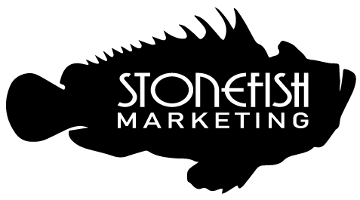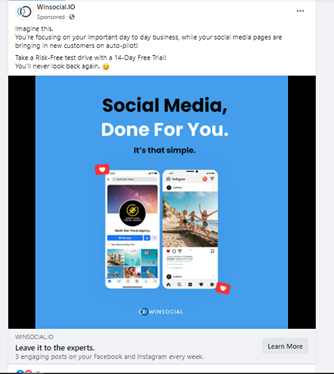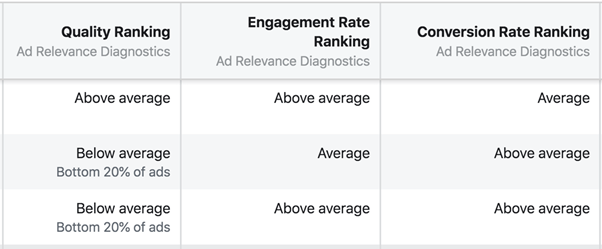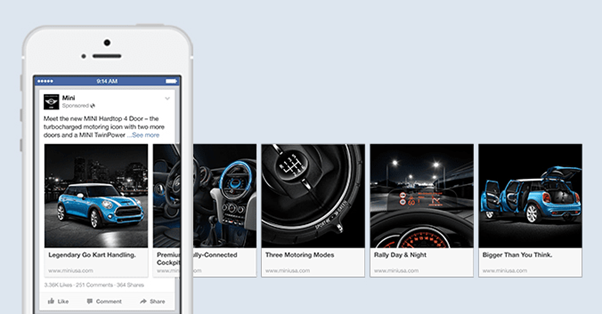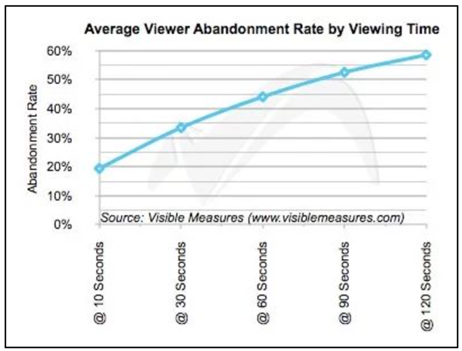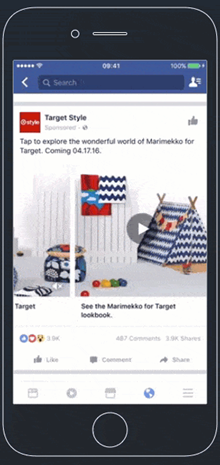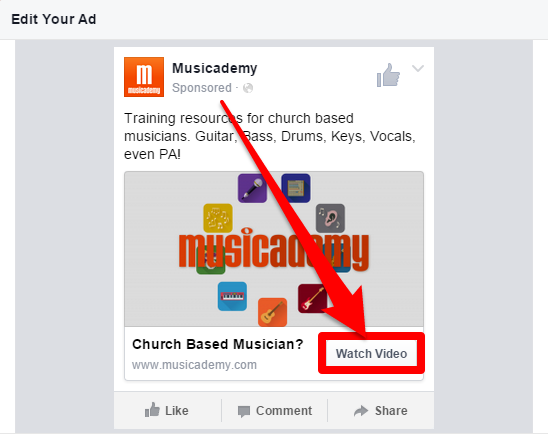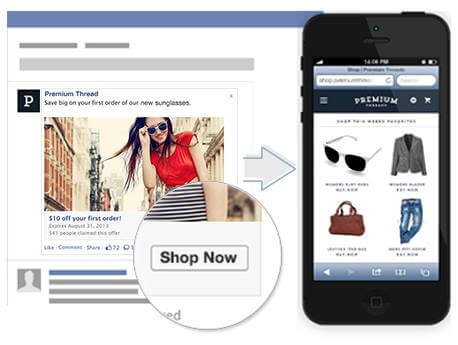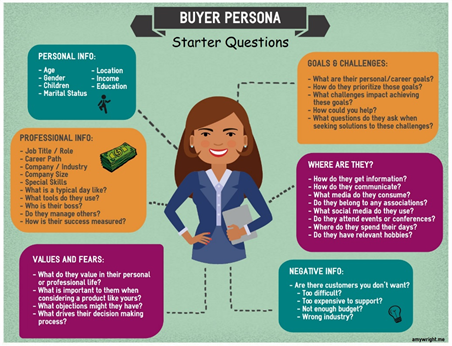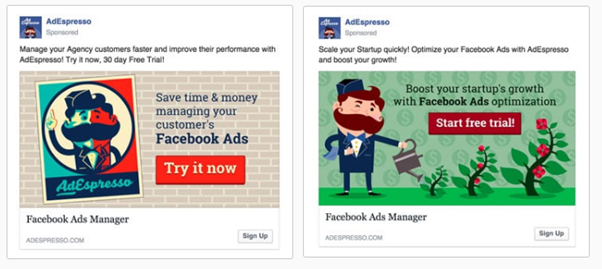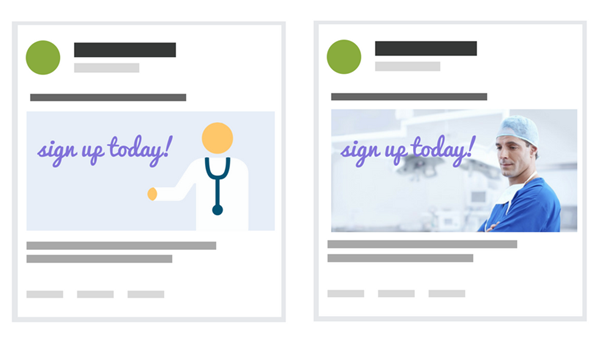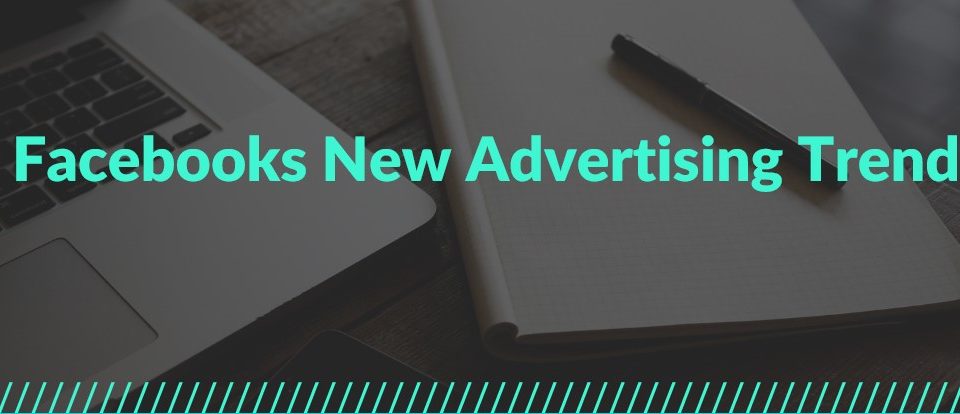6 Simple Tips for a Successful Facebook Advertising Campaign

Biggest Advantages of Focusing on Your Internet Marketing Strategy
August 21, 2020
Latest Trends in Facebook Advertising
September 1, 2020Using Facebook advertising or Facebook for marketing has become an integral part of the digital and e-commerce repertoire. People are using Facebook multiple times per day, seeing what is happening with their social network, check up on the news, or to play games. Facebook makes sharing information more straightforward than it has even been, to a point where many consumers depend on it.
The success and popularity of the Facebook channel mean brands also need to have a presence if they want to connect with their target audience. In the first quarter of 2020, Facebook reports say there are 2.60 billion monthly active users, and 1.73 billion users visiting daily. The statistics include core products owned by Facebook, including WhatsApp and Instagram.
Facebook makes most of its revenue from its Facebook advertising platform, thanks to the vast audience reach. The start of 2020 brought in $17.44 billion in ad revenue, with almost 90% of US marketers using Facebook for advertising.
No matter the size of your business, Facebook helps you reach your target audience and build long-lasting customer relationships. For example, you can specifically target men between 30 and 35 years old, living in Florida, that show and interest in fitness. The massive amount of data that Facebook holds provides endless advertising opportunities.
In this post, we will look at six tips for making your Facebook advertising campaign a success.
Facebook Remarketing
Do you ever wonder why ads appear on Facebook that relates to something that you’ve been looking at somewhere else? That concept is known as remarketing. Your leads are tracked using cookies that tag them with a code, triggering ads to appear as they move around the internet. Even when researching statistics for this post, upon checking Facebook, we see related retargeting messages like below.
Remarketing works well as you know users have an interest in your product or service, giving an upper-hand in swaying their decision.
Facebook remarketing is known as Custom Audiences. It offers to target people that previously interacted with your business. There are five different segments that Custom Audiences can target.
- Customer Files – matching up email addresses or phone numbers to existing Facebook accounts
- Web Traffic – people that visit your website, or specific pages
- App Activity – people that interact with your mobile app
- Offline Activity – people that visit your store or phone the business
- Engagement – people that engage with your Facebook and Instagram feeds
As part of the segmentation, you can also layer behavioral, demographic, and interest data to refine the audience even further. As well as knowing the prospects previously interacted with your business, you can specify the precise members of the group that you want to market towards.
Using the Custom Audiences feature of Facebook will help you to create efficient remarketing strategies.
Facebook Advertising & Offering Value
Facebook uses three relevancy metrics that it introduced in 2019, replacing what was known as the Ad Relevancy Score. The scores show how relevant and valuable an ad is to the target audience.
– Quality ranking metric is an assessment of the feedback that you receive on ads and the post-click experience. It ranks the ad against other ads that compete for the same audience. For example, a high-quality image of a location close to the local audience might work better than a generic photo.
– Engagement rate measures the likes, comments, clicks, shares, and other reactions from your audience, compared to competitor ads. A large volume of interactions suggests an engaging and valuable ad.
– Conversion rate ranking compares your ad to others with the same goal. For example, if the objective is for the customer to complete a purchase, an ad that influences more people to do so is more valuable than one where customers drop-off at the checkout.
Source: https://www.socialmediaexaminer.com/facebook-ad-relevance-score-updates-what-marketers-need-to-know/
Facebook will score ads for relevancy once they are seen 500 times. You can improve the scores with particular targeting and testing to find out what works. It is essential to create ads that score well on all the metrics, as they will be successful in engaging and converting prospects.
Short, concise, and efficient ads
Ads need to have sizing that is responsive on Facebook. If you ignore size, it may lead to part of them being cut off. Ad Espresso provides a comprehensive guide to the sizing, which you can find here. Below is a summary of the specifications for different ad types.
Images – Size: 1,200 x 628 pixels, Ratio: 1.91:1, Text: 90 characters, Headline: 25 characters, Link description: 30 characters.
Videos – Format: .mov or .mp4, Ratio: 16:9, Resolution: at least 720p, File size: 2-3GB max, Thumbnail size: 1,200 x 675 pixels, Text: 90 characters, Headline: 25 characters, Link description: 30 characters.
Carousels – Image size: 1,080 x 1,080 pixels, Image.video ratio: 1:1, Text: 90 characters, Headline: 40 characters, Link description: 20 characters
Slideshows – Size: 1,289 x 720 pixels, Ratio: 16:9, 1:1, 2:3, Text: 90 characters, Headline: 25 characters, Link description: 30 characters
The specifications above will ensure ads display correctly, but we recommend you read the full Ad Espresso guide.
Source: https://adespresso.com/blog/facebook-ad-image-size/
Facebook Advertising: GIF Ads
Fewer views abandon short videos. The success of the short-form video network, TikTok, tells us that consumers like content that is concise and to the point.
Source: https://www.talkingtreecreative.com/blog/video-marketing-2/the-impact-of-video-length-on-engagement/
Facebook advertisement GIFs are a mid-point between an image and a video. GIFs play in a loop, in the same way as videos. They look something like the example below.
Source: https://www.wordstream.com/blog/ws/2018/05/21/facebook-carousel-ads
GIFs are more engaging than standard text or image advertising, and there are plenty of tools on the market to help you create them. GIPHY’s Gif Maker and Snagit are two of the most popular GIF creator platforms.
Facebook GIFs need to be subtle, just enough to catch the eye of the viewer as they scroll through the social media platform.
Call to Action
Facebook Advertising is essentially redundant unless it contains a call to action. Whether it be within the ad copy or the video depends on the campaign, but it should always have clickable buttons that get the prospect to do something.
Getting the right call to action within your advertising will take some trial and error, but it is the most crucial part to get right. It is the click of a CTA button that drives sales, submissions, or subscribers.
Source: https://thedigiterati.com/new-facebook-feature-promote-your-call-to-action-from-your-page/
A call to action will have a clear objective, like the example above, which tells users to watch a video, generating better brand awareness. Other common examples are “Shop Now,” “Click for more,” “Download the App,” or “Buy Now.”
A unique image that represents your brand, a small piece of descriptive text, and a clear call to action is the best way to be successful.
Source: https://www.fetchfunnel.com/cta-for-facebook-ads/
Remember, you can use different images, calls to action, and text for each of your segments that you create using Custom Audiences. It is likely that they respond differently. For example, a younger demographic may be ready to buy, whereas older age groups would rather be offered more information.
Segmentation and Personas
The majority of businesses will have more than one type of customer. Unless you are in a very distinct niche, creating a buyer persona will help you in building better customer experience.
Source: https://www.goodtoseo.com/what-is-a-buyer-persona-and-why-is-it-important/
With your potential customers, get an understanding of their age, interests, where they live, and what problems they have that your products will solve. As you start to design a campaign, add images, and write text, you can base it on what will drive the audience you are attempting to influence. Ad Espresso uses different images and text for each persona.
Source: http://andresrayo.com/10-design-tips-to-create-great-facebook-ads/
Both of these Facebook ads are sending the same message, but slight changes to wording and imagery are in place to appeal to the different agency and startup personas.
Secret 7th Tip – Test, Test, Test
Testing is a key principle for getting Facebook advertising campaigns right. It will take time to know how your audience responds to images, text, and calls to action. Create a plan for split testing with incremental and continual ad optimization. You can use Facebook analytics to understand how audiences respond to advertising and find the best way to position your campaigns. As a process, you could run two ads with the same copy and a different image, optimizing whichever one performs the best.
For example, would an image of an animated doctor work better than a human doctor for their Facebook advertising?
Source: https://www.wordstream.com/blog/ws/2018/02/14/facebook-split-testing
Some companies may decide to test more than two Facebook advertisement copies at a time.
Source: https://www.wordstream.com/blog/ws/2018/02/14/facebook-split-testing
There is no limit to the amount of testing you do. More is always better, so base it on the resources you have available.
Summary
Facebook is now a crucial way to connect with audiences and scale up your business. Although trends are always changing, and the way people consume media is evolving, Facebook has the tools that allow companies to interact with their target audiences.
